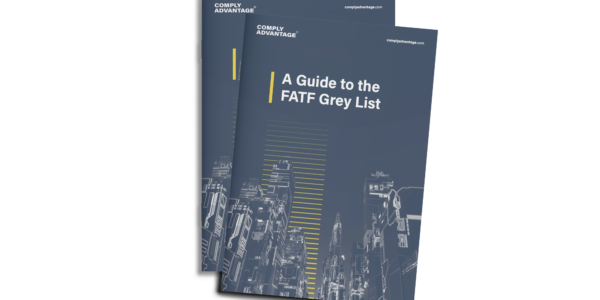

Despite being the second-smallest country in Europe, Monaco is considered a major international banking center. It is not a member of the European Union but uses the euro through a monetary union with France that was established in April 1945. As a result of this bilateral relationship, France plays a significant role in Monaco’s banking sector, with most of its financial institutions (FIs) controlled by French banks.
However, to ensure the stability and integrity of its financial system, Monaco also relies on its own dedicated regulatory authority, the Autorité Monégasque de Sécurité Financière (AMSF), which oversees and regulates financial activities within the country.
What is the AMSF?
The Autorité Monégasque de Sécurité Financière (AMSF) is Monaco’s primary financial intelligence unit (FIU), specializing in supervising the principality’s anti-money laundering and combating the financing of terrorism (AML/CFT) regime. As a key player in the global financial security landscape, the AMSF is a member of the Egmont Group, connecting it with over a hundred other FIUs worldwide.
In July 2023, the AMSF replaced the Service d’Information et de Contrôle sur les Circuits Financiers (SICCFIN) as Monaco’s FIU. This transition was part of a nationwide legislative reform, transforming the FIU from a state-run administrative service into an independent authority.
The AMSF’s role and responsibilities
As a result of this reform, the AMSF now has greater autonomy in conducting financial intelligence operations, overseeing compliance, and imposing sanctions – all of which were previously handled by a government minister.
The table below highlights the responsibilities of the AMSF outlined in Law No. 1,549 – which amends Act No. 1,362 – according to the FIU’s three main functions:
|
Financial intelligence |
Supervision |
Sanctioning |
|
|
|
Financial institutions monitored by the AMSF
The same law that expanded Monaco’s FIU powers also widened its supervisory scope to include notaries, bailiffs, and lawyers who must now report suspicious transactions to the AMSF instead of the Public Prosecutor. The full list of entities regulated by the AMSF can be found in Articles 1 and 2 of Law No. 1,549, which includes:
- Credit institutions
- Payment institutions.
- Electronic money institutions (EMIs).
- Gambling and gaming institutions.
- Money transmitters.
- Currency exchange services.
- Property dealers.
- Auditors.
- Tax consultants.
- Cash transport services.
- High-value dealers (including jewelry, precious metals and stones, aircraft, and pleasure crafts).
- Third-party intermediaries.
However, the AMSF’s authority is not limited to institutions based solely within Monaco’s borders. It also extends to branches operating within the principality, even if their main offices are located abroad.
Regulatory framework of the AMSF
In December 2022, the Committee of Experts on the Evaluation of Anti-Money Laundering Measures and the Financing of Terrorism (MONEYVAL) published Monaco’s fifth mutual evaluation report (MER). The report analyzed the level of compliance with the Financial Action Task Force’s (FATF) 40 Recommendations and the level of effectiveness of Monaco’s AML/CFT system. Overall, the effectiveness of Monaco’s AML/CFT system was described as “uneven,” with the authority saying Monaco needs to “step up its efforts.”
Since then, Monaco’s AML/CFT legislative framework has undergone some “modernization”. Law No. 1,549 – which replaced SICCFIN with the AMSF – is only one part of the principality’s four-pronged AML reform. The three other laws are:
- Law No. 1,550 (August 2023), focusing on the transparency of legal entities.
- Bill No. 1080, focusing on enhancing the powers of judicial authorities in relation to financial crime investigations, prosecution, and sanctions.
- Bill No. 1084, concerning the regulation and transparency of trusts.
As of September 2024, the latter two bills are in various stages of review and will be made publicly available on Legimonaco once they are officially enacted. Until then, updates can typically be tracked via the Conseil National website.
The AMSF’s AML requirements
The AMSF has outlined the following AML obligations for regulated entities:
- Adopt risk-based due diligence procedures that focus on addressing the risks associated with the nature of a firm’s business and its clientele, specifically targeting money laundering, terrorist financing, corruption, and the proliferation of weapons of mass destruction.
- Conduct risk assessments to identify and understand a firm’s exposure to these risks. This includes documenting the nature of their products or services, transaction conditions, distribution channels, and client characteristics.
- Perform know your customer (KYC) measures before establishing a business relationship with a client, using photographic ID to identify the client, the agent, and, where applicable, the beneficial owner.
- Document all monitoring and analysis measures related to the vigilance of money laundering and terrorism financing risks and keep all relevant documents available for supervisory authorities.
- Implement ongoing monitoring throughout the business relationship to verify all transactions and/or account activity are consistent with the customer’s risk profile.
The impact of the AMSF on Monaco’s financial sector
Despite making some progress since Moneyval’s evaluation in 2023, in June 2024, the FATF highlighted multiple gaps in Monaco’s AML regime. As a result, the principality was added to the grey list.
Monaco’s government reaffirmed its commitment to rectifying these issuess, placing particular emphasis on the AMSF. Since the FIU’s reform, the AMSF has been tasked with increasing regulatory oversight and enforcement in the financial sector, especially by improving risk-based supervision and enhancing compliance measures across FIs and non-financial entities.
The AMSF’s expanded mandate ensures Monaco’s financial sector is better equipped to meet international standards, with stricter sanctions for non-compliance and enhanced efforts to identify and seize criminal assets. These steps are essential to restoring confidence in the principality’s financial system and will be key to its removal from the grey list. As the country moves toward the FATF’s 2025 milestones, the AMSF’s impact is expected to be pivotal in both addressing the FATF’s concerns and maintaining Monaco’s reputation as a secure financial hub.

A Guide to the FATF Grey List
Our expert guide takes firms through the importance of the grey list, what FATF assessments look for, and how firms should respond to a grey-listing.
Download nowAMSF compliance challenges
Monaco has the highest concentration of millionaires and billionaires in the world. While Monaco’s status as a hub for the wealthy presents unique opportunities for financial firms, it also comes with significant compliance obligations. With such inordinate wealth within its borders, firms face the challenge of scrutinizing their customers’ sources of wealth and sources of funds (SoW/SoF), employing enhanced due diligence (EDD) measures to ensure compliance with AMSF’s regulations.
Given the international profile of many Monaco residents, firms must also navigate a complex web of international laws and regulations. This includes the need to understand and implement the requirements of foreign jurisdictions, particularly those related to tax obligations and reporting standards such as Europe’s Common Reporting Standard (CRS) and the United States’ Foreign Account Tax Compliance Act (FATCA).
Additionally, given the dynamic nature of the global financial landscape and its constantly evolving threats and regulatory updates, firms in Monaco need to be agile. They must continuously update their compliance programs and staff training to detect financial crimes effectively.
Tips for firms to comply with AMSF regulations
As Monaco’s AML/CFT landscape continues to evolve, it’s imperative for firms operating within the jurisdiction to monitor and adapt to legislative updates continuously. To effectively mitigate the risk of non-compliance, these entities should integrate robust processes and policies into their compliance frameworks.
This includes conducting regular risk assessments, implementing strong due diligence procedures, and ensuring staff are well-trained on the latest regulatory standards. By proactively addressing these critical areas, firms can avoid taking a “tick-box” approach to compliance that gears toward doing the bare minimum to appease regulators. Rather, firms should:
- Implement advanced due diligence to identify and verify high-net-worth individuals (HNWIs) and ensure thorough screening of beneficial owners. This should include enhanced checks for politically exposed persons (PEPs), individuals from high-risk jurisdictions, and any past involvement in illicit activities.
- Continuously monitor corporate clients and their ownership structures to detect changes in beneficial ownership or suspicious activity. Given Monaco’s high concentration of complex financial structures, ongoing scrutiny is critical to preventing the misuse of shell companies and offshore vehicles.
- Use automated transaction monitoring tools to detect unusual patterns, large cash movements, or other red flags, particularly in high-value sectors such as real estate and luxury goods, which are prevalent in Monaco. Real-time tracking helps ensure timely reporting of suspicious transactions to the AMSF.
- Check adverse media sources regularly to identify clients or entities with potential ties to criminal activity or regulatory breaches. This is especially crucial when dealing with Monaco’s ultra-wealthy clients, who might attract public scrutiny.
Get a 360-degree view of financial crime risk with ComplyAdvantage Mesh
A cloud-based compliance platform, ComplyAdvantage Mesh combines industry-leading AML risk intelligence with actionable risk signals to screen customers and monitor their behavior in near real-time.
Get a demoOriginally published 29 October 2024, updated 11 February 2025
Disclaimer: This is for general information only. The information presented does not constitute legal advice. ComplyAdvantage accepts no responsibility for any information contained herein and disclaims and excludes any liability in respect of the contents or for action taken based on this information.
Copyright © 2025 IVXS UK Limited (trading as ComplyAdvantage).
